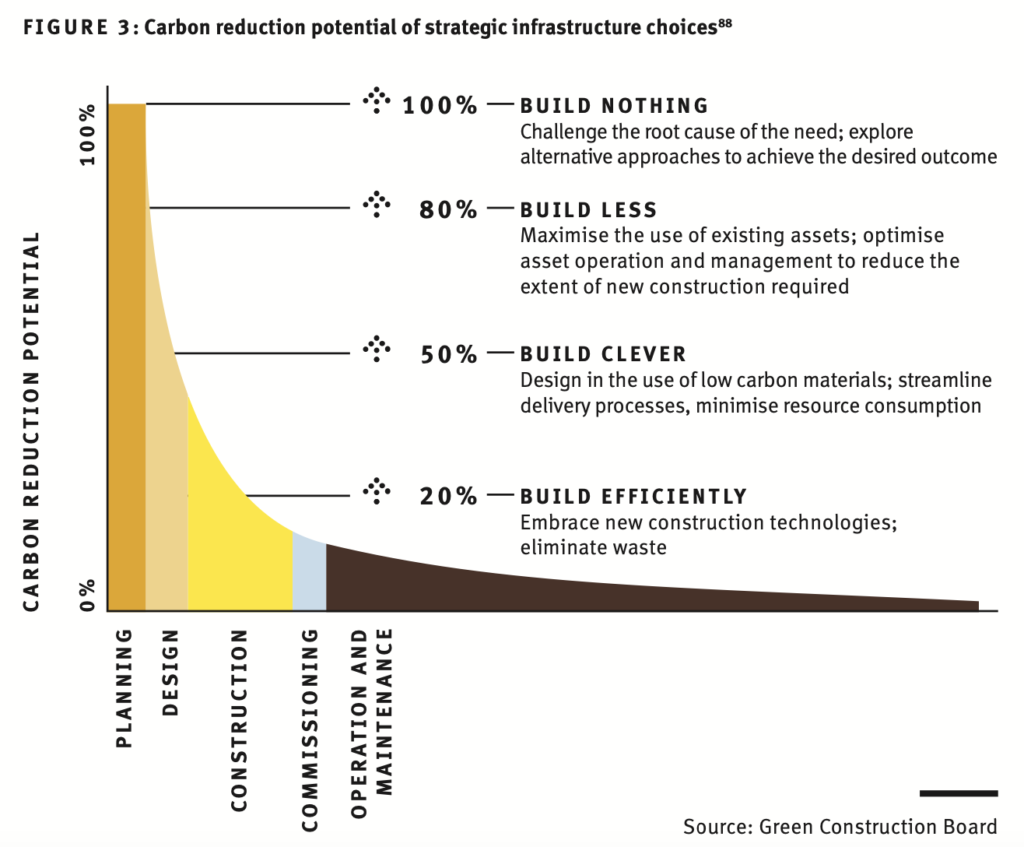The Journey to Net-Zero
Inspiring climate action in the Australian transport sector
The scope of this report is focused on land-based transport and associated infrastructure which includes road, rail, bridges, intermodal and active transport solutions such as pedestrian and bicycle paths, and other related infrastructure.
The purpose of this report is to inform and provide the foundation for Roads Australia, the Australasian Railway Association and the Infrastructure Sustainability Council to galvanise action from government and industry to address the need to decarbonise the transport sector.

Global Picture
The construction industry is responsible for 40% of the CO2 emissions worldwide.
The deep foundations industry accounts for 20% of those emissions, so more efficient design, reducing volumes of concrete and steel for every project, is crucial to installing more sustainable pile foundations, retaining walls and soil anchors.
Australia
In Australia, 70% of greenhouse gas emissions are attributable to, or influenced by infrastructure. Once operational, 55% of Australia’s annual emissions are related to the operations they enable.
Infrastructure Australia states that road and rail projects account for around 75% of total major public infrastructure pipeline resource demand. By targeting the materials used in these projects, there is significant opportunity to reduce the industry’s emissions. These are finite resources, and the sooner we implement more circularity into our designs and subsequently our materials, the better.
It presents a compelling case for a great opportunity to change the way we approach our transport sector, and indeed our towns and communities. It is a ‘call to action’ for the industry to stop and rethink the way we approach transport in Australia. It presents an opportunity for the industry to come together to collaborate, ideate and explore new methods, approaches, and tools to improve the impact our industry has on society, the environment, our culture and our climate.
The Journey to Net-Zero – Inspiring climate action in the Australian transport sector – May 2022 presents case studies and examples of leading practice solutions that are transforming our places and our transport systems in Australia and around the world. It demonstrates that there are green shoots of progress emerging that will enable the sector to arrive at a low carbon economy by 2050. An audacious challenge has been set – one that requires a collaborative approach and political will, but also presents significant rewards.
Here are some of the key ways to change the construction industry to become more sustainable:
- Use sustainable materials: The construction industry is a major consumer of raw materials, and the production of these materials can have a significant environmental impact. By using sustainable materials, we can reduce the environmental impact of construction.
- Design for energy efficiency: Buildings are a major source of energy consumption, and the design of a building can have a big impact on its energy efficiency. By designing buildings to be energy efficient, we can reduce their environmental impact.
- Use sustainable construction methods: The construction process itself can have a significant environmental impact. By using sustainable construction methods, we can reduce the environmental impact of construction.
- Rethink demolition: When a building is demolished, the materials can be recycled or reused, or they can be disposed of in a sustainable manner. By rethinking demolition, we can reduce the environmental impact of construction.
- Manage construction waste: Construction waste is a major environmental problem. By properly managing construction waste, we can reduce the amount of waste that goes to landfills.
- Educate the public: The public needs to be aware of the environmental impact of construction and the steps that can be taken to make the construction industry more sustainable. By educating the public, we can encourage people to make more sustainable choices when it comes to construction.
By taking these steps, we can make the construction industry more sustainable and help to protect the environment.
Collaboration, capacity building and education
The industry is fortunate to benefit many talented people, groups and organisations with specialist skillsets and expertise that can assist in the transition to net-zero. Unfortunately, this specialized talent pool is limited in size and reach. In many cases, their skill sets are not applied to phases of a project where the biggest impact can be made. As an example, during the business case stage where key decisions are made upfront in a project’s lifecycle, there is insufficient prioritisation of the tools and resources relating to carbon reduction or circular economy principles.

This shortfall can lead to compromised decision making, higher whole of life costs, and potential impacts in carbon that may be locked in for decades. The sheer scale of the planned transport infrastructure pipeline (over $110 billion in the next 10 years) exacerbates this issue. Thus together, the sizable pipeline of projects and the limited talent pool challenges industry’s capacity to address these social, environmental and cultural issues.
Educate key stakeholders on systems thinking, circularity and whole-of-life principles to ensure decisions are made that consider all perspectives and material issues pertaining to projects.
Facilitate industry wide collaboration to focus on designing out waste and utilise systems thinking to drive circular economy principles into the planning and design processes for new assets.
Encourage collaboration to facilitate the multi-pronged approach necessary to overcome barriers and increase uptake of low embodied carbon construction strategies.
Advocate for a change in culture to allow sustainability to be integrated into the design and planning of infrastructure, rather than a “nice to have” that is value managed out.
Foster a culture of sharing to ensure lessons learnt on particular projects are communicated to the industry, other projects and state governments to support continual growth of the industry.